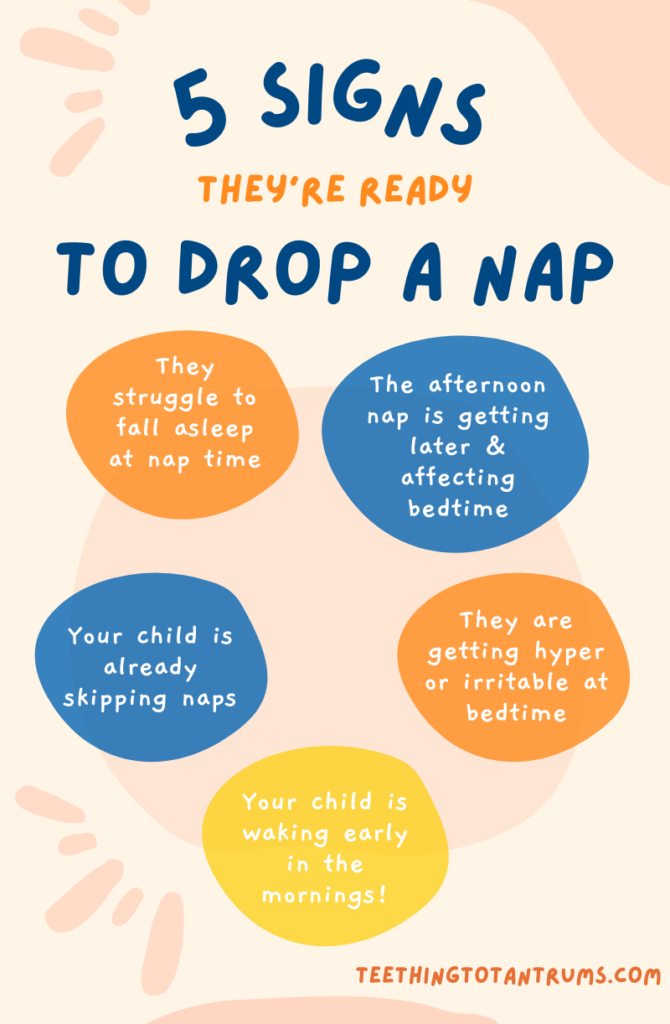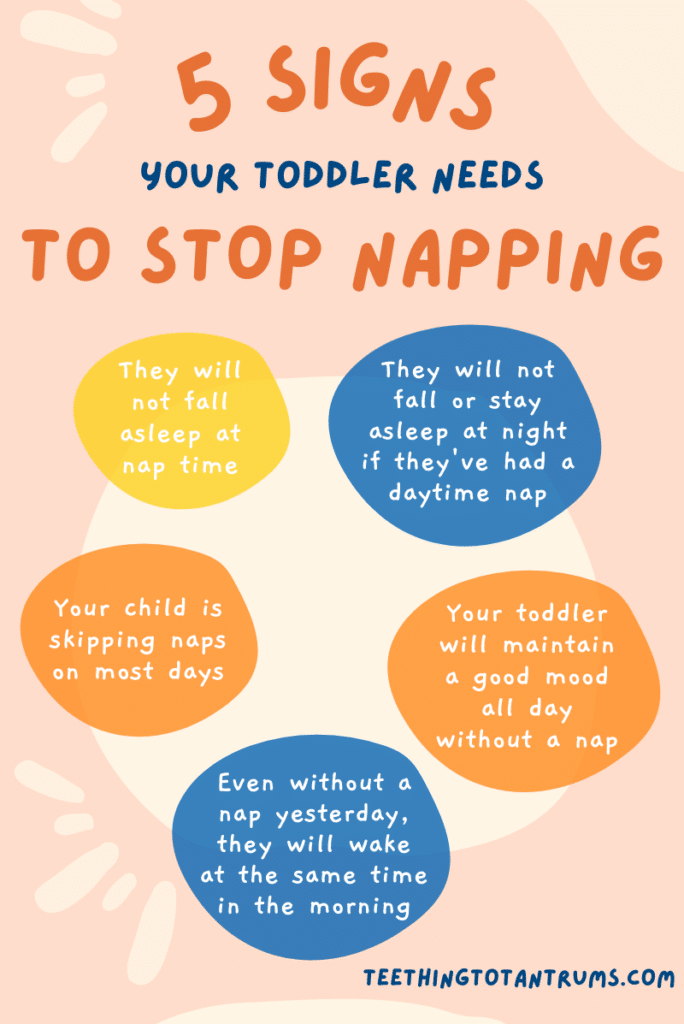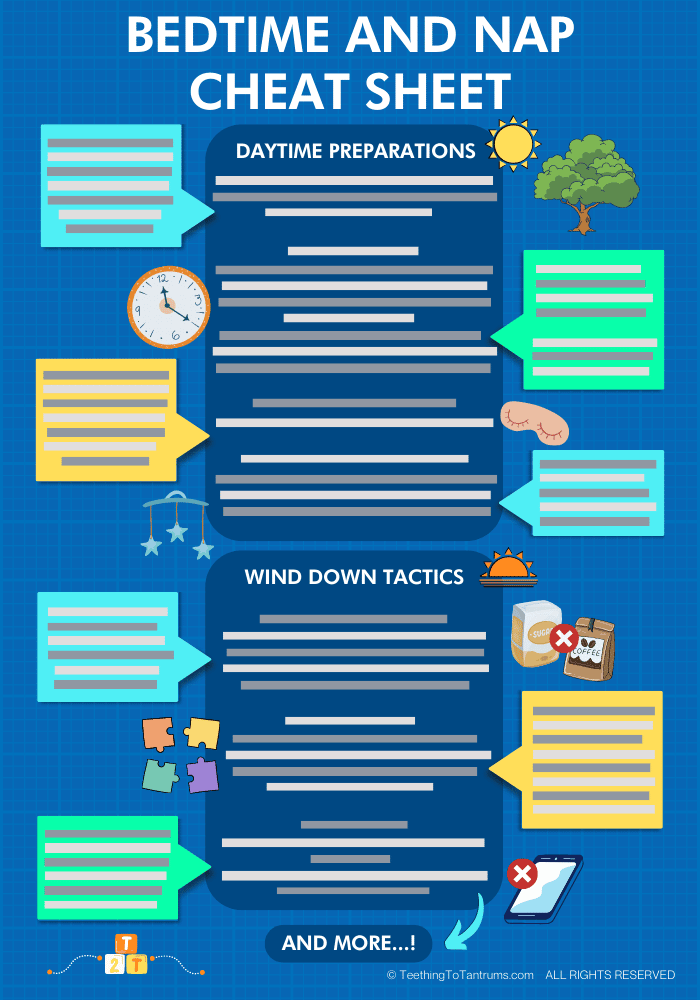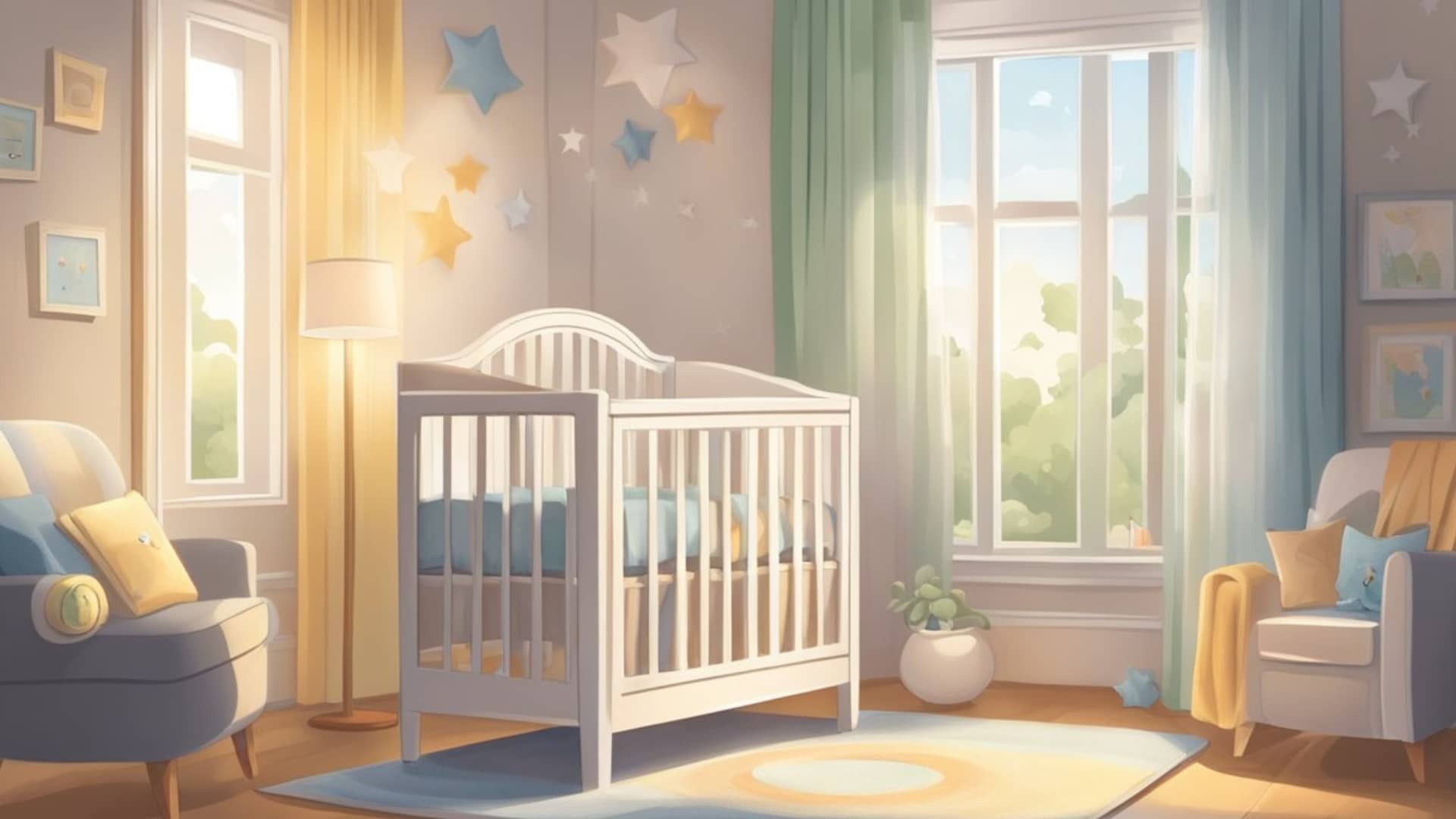Sleep is a delicate balancing act that plays a huge role in determining whether you have a lovely calm child or a little terror on the verge of a meltdown! Here’s everything you need to know about sleep transitions to finally answer the question: when do toddlers stop napping?
When Do Toddlers Stop Napping?
Toddlers stop napping completely between the ages of 3 and 5 years. However, every child is different and you need to trust your instincts and watch out for these telltale signs to know when your little one is ready to stop napping.
Signs Your Toddler Is Ready To Stop Napping
Your toddler is getting ready to drop a nap, if they are showing these signs:

- They’re struggling to fall asleep at nap time,
- Your toddler’s afternoon nap is getting later and later and beginning to affect the bedtime routine,
- They are struggling to fall asleep at bedtime,
- Your toddler has already started to skip naps on some days,
- And your toddler is waking early in the mornings.
And to know when do toddlers stop napping completely, look out for these signs:

- Your toddler will skip naps on most days,
- They do not fall asleep at all when you put them down for a nap,
- They struggle to fall asleep and stay in bed at bedtime if they have had a nap in the afternoon,
- Your toddler will maintain a good mood throughout the day without a nap.
- And they wake up at the same time every morning even without a nap the previous day.
How Many Naps Should My Toddler Be Having?
On average, most toddlers start to show signs of dropping their morning nap by the time they are 15-18 months old. After this, most children will still require one nap a day until they are between the ages of 3-5 years.
1 Year Old Nap Schedule
1-year-olds need 2 naps per day. This will make up 2-3 hours of their recommended 11-14 hours of sleep in a 24 hour period. Read these posts to learn more:
- 12 Month Old Sleep Schedule
- 13 Month Old Sleep Schedule
- 14 Month Old Sleep Schedule
- 15 Month Old Sleep Schedule
- 16 Month Old Sleep Schedule
- 17 Month Old Sleep Schedule
- 18 Month Old Sleep Schedule
NOTE: Sleep regressions can easily affect daytime napping and nighttime routines. But try as best you can to maintain your child’s usual bedtime and ensure they get adequate sleep.
2 Year Old Toddler Nap Schedule
2-year-olds will have dropped their morning nap and now need 1 afternoon nap per day. This will make up 1-2 hours of their daily recommended 12-14 hours of sleep.
Read this post to learn more: 2 Year Old Sleep Schedule
3 Year Old Toddler Nap Schedule
Most 3-year-olds will also need 1 afternoon nap per day. This will typically make up around 60 minutes of their daily recommended 10-12 hours of sleep.
Read this post to learn more: 3 Year Old Sleep Schedule
TOP TIP: Occasionally your 3 year old toddler will not require a nap, but I would always aim for a quiet time after lunch. Encouraging your little one to sit quietly in their bedroom looking at picture books or playing alone can be restorative for both of you.
4 Year Old Toddler Nap Schedule
And lastly, 4-year-olds may or may not need daytime sleep. This will vary with how busy their day has been and if they do nap, it may last up to 2 and a half hours.
Bear in mind that if your child is exhibiting any of the following signs, they are NOT ready to stop napping just yet:
- They get cranky in the afternoon,
- They doze off in the car regularly,
- Your toddler shows signs of being sleepy during the day,
- And they become hyper just before bedtime.
Looking to get your little one to sleep quickly and effortlessly? Check out my Bedtime and Nap Cheat Sheet and master the art of making daytime naps and bedtimes as seamless as possible.
A bedtime & nap cheat sheet so good your little one will ask you to put them to bed...
Laura Williams "This is a life saver! I'm so glad I downloaded your bedtime & nap cheat sheet. My little one actually asked me to put him to bed last night! Unbelievable! Thank you so much!"
Click Here For The FREE Cheat Sheet
Frequently Asked Questions About When Do Toddlers Stop Napping
Looking for more information about when do toddlers stop napping? Here are the answers to the most commonly asked questions about nap transitions.
Is It OK If My 2 Year Old Doesn’t Nap?
Yes and no… It is very normal for 2-year-olds to no longer need a morning nap… But stopping an afternoon nap is far less common at this age.
The occasional missed nap time is fine, but most 2 year olds should still be having at least 1 nap a day.
Does Stopping Daytime Naps Affect A Toddler’s Sleep?
Daytime naps should NOT impact your toddlers’ nighttime sleep or regular bedtime routine.
The only case where naps affect sleep at night is when your toddler is having too much or too little sleep for their needs. If this happens, it can put their sleep routine completely out of whack.
TOP TIP: Too much sleep and your toddler will struggle to fall asleep at bedtime and or start to wake earlier than normal in the mornings. Too little and they will become cranky and hyper towards the end of the day and be difficult to settle at bedtime.
My Toddler Doesn’t Seem Quite Ready To Drop Their Nap Fully… Are Missed Naps OK?
Dropping a nap is not like flicking a light switch… Your toddler’s nap transition will take 4-6 weeks on average.
This is the amount of time it takes for your toddler’s body to adjust to the new sleep schedule. And as a result, sometimes your toddler will need a nap and on others, they won’t.
So yes… Missed naps are absolutely fine.
Can I Implement Quiet Time Instead Of A Nap?
Yes. When your toddler is going through a nap transition, you should encourage your toddler to have quiet times in a calm corner when they’d usually have a nap as this gives them the opportunity to calm down and relax.
Quiet time can include playing with crayons, and puzzles or looking at books.
REMEMBER: Once your little one has fully stopped napping, the time after lunch is the new quiet time when you can spend together engaging in low-energy quiet activities. This can become a wonderfully precious and bonding part of your daily routine before you embark on the afternoon’s outdoor activities.
Should I Wake My Toddler From A Nap?
Yes, you can wake a toddler from a nap. Especially if your toddler has been napping for a long time and it’s getting close to their bedtime.
This is because too much sleep too late in the day will disrupt their sleep patterns and cause them to be hyper before bed or have trouble sleeping at night.
Ultimately, making the decision to let your toddler sleep longer or wake early from a nap time is up to you, your lifestyle and the amount of sleep your toddler requires in a 24 hour period.
What Time Should My Toddler Go To Bed?
From personal experience, most toddlers should be in bed between 6.30pm and 7.30pm. And certainly no later than 8pm to ensure they get enough sleep to support their brain’s growth and development as well as their physical development.
NOTE: The content on this post is for informational purposes only and should not replace the medical advice from your sleep consultant, doctor, pediatrician, or medical professional.
Need More Parenting Help?
- Download our FREE Bedtime & Nap Sleep Cheat Sheet. It’s a free, easy-to-use and proven formula designed for parents of 0-5 year olds to master the art of consistently undisturbed and restful sleep without the yelling, nagging or exhausting long-winded evenings.
- Check out our Parenting Toolbox. You’ll get access to expertly-chosen products that you can guarantee are the best for your little one and your wallet.
- Are you looking for personalized guidance to navigate the challenges of parenting? I offer 1-on-1 consultations to bring you tailored strategies and actionable advice to help support your child's growth and well-being with confidence.

A bedtime & nap cheat sheet so good your little one will ask you to put them to bed...
Laura Williams "This is a life saver! I'm so glad I downloaded your bedtime & nap cheat sheet. My little one actually asked me to put him to bed last night! Unbelievable! Thank you so much!"
Click Here For The FREE Cheat Sheet


